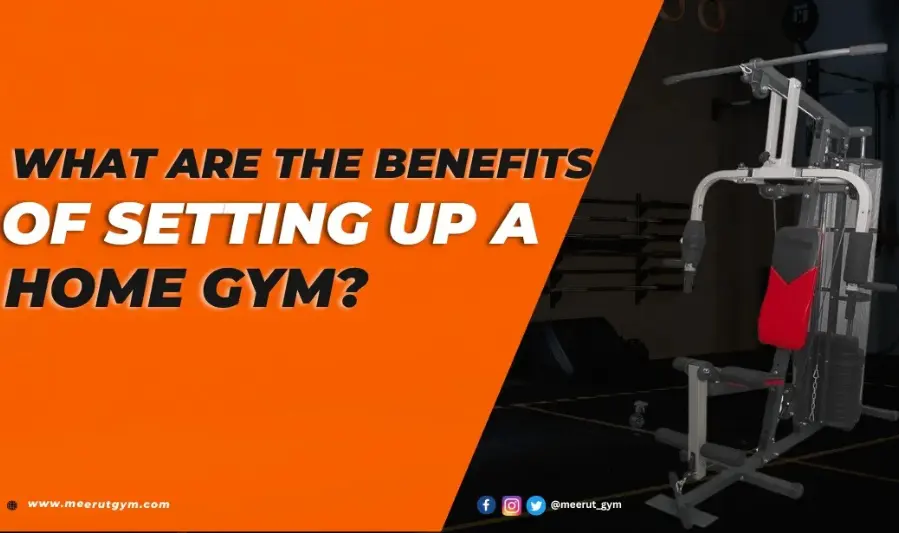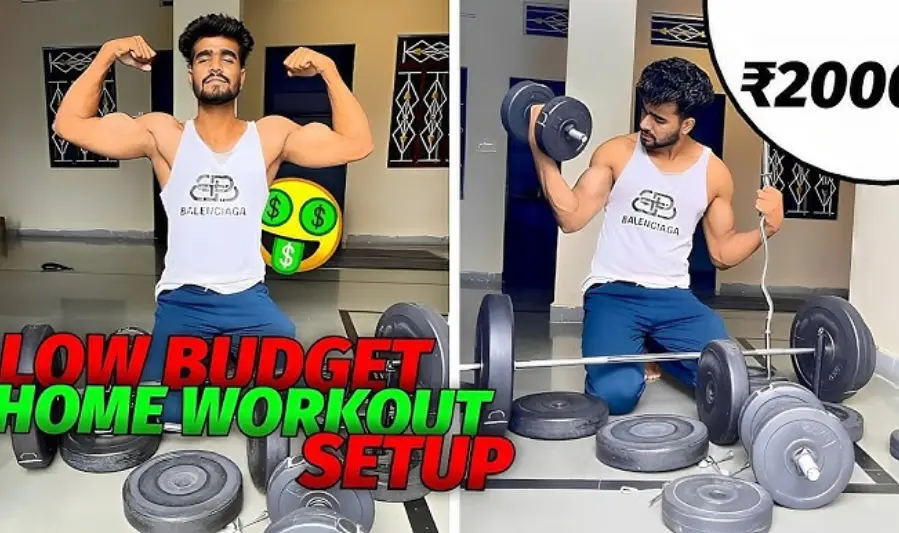Introduction
The Rise of Home Workouts
In recent years, home workouts have become increasingly popular as more people discover the convenience and flexibility of exercising in their own space. Whether it’s due to busy schedules, limited access to gyms, or the desire for privacy, working out at home offers a practical and sustainable solution for staying fit.
The Cost Misconception
Despite the growing trend, many people still avoid starting a fitness routine because they assume that creating a home gym setup requires expensive equipment or a lot of space. This misconception often prevents beginners from taking the first step toward a healthier lifestyle.
Purpose of This Guide
Building a Budget-Friendly Home Gym
This article aims to break that misconception by showing readers how to create an effective home gym using simple, affordable equipment. With just a few smart purchases and a bit of creativity, anyone can design a workout area that supports their fitness goals without breaking the bank.
Benefits of a Home Gym

Convenience
One of the biggest advantages of having a home gym is convenience. You can work out anytime without worrying about travel time, crowded facilities, or limited gym hours. This makes it easier to stay consistent and fit your workouts around your personal schedule.
Cost-Effectiveness
While setting up a home gym requires an initial investment, it’s a one-time cost compared to the ongoing expense of gym memberships. Over time, you’ll save money and still have access to the equipment you need for a full-body workout.
Privacy and Comfort
A home gym offers the privacy and comfort of exercising in your own space. You can wear what you like, listen to your favorite music, and train without feeling self-conscious — creating an environment that keeps you motivated and relaxed.
Flexibility
Having a home gym gives you the freedom to customize your workouts according to your fitness level, goals, and preferences. You can easily switch between strength training, cardio, or yoga routines, and even adjust your setup as your fitness needs evolve.
How to Plan Your Home Gym Setup
Define Your Fitness Goals
Before you start buying equipment, take time to identify your fitness goals. Are you aiming for weight loss, muscle gain, improved endurance, or general fitness? Knowing your priorities helps you choose the right type of exercises and gear to match your needs.
Set a Budget
It’s easy to get carried away when shopping for fitness equipment, but it’s best to start small and build gradually. Begin with a few essential items and add more as you progress. This approach keeps costs manageable and ensures you only invest in tools you’ll actually use.
Choose a Workout Area
You don’t need a large space to create an effective home gym. Pick a dedicated workout area such as a spare room, a balcony, or even a small corner of your living space. Ensure it has good ventilation, sufficient lighting, and enough room to move safely during exercises.
Prioritize Essentials
When setting up your gym, focus on versatile, space-saving equipment that allows for multiple types of workouts. Resistance bands, dumbbells, a yoga mat, or an adjustable bench can all provide great variety without taking up too much space.
Must-Have Simple Home Gym Equipment Under Budget

Affordable and Effective Options for Every Fitness Level
You don’t need expensive machines to get a great workout. The following budget-friendly items are versatile, effective, and suitable for all fitness levels, helping you build strength, endurance, and flexibility right at home.
Resistance Bands
Ideal for: Strength, flexibility, and stretching
Resistance bands are lightweight, affordable, and perfect for both beginners and advanced users. They can be used for a wide range of exercises — from upper body workouts to lower body toning — and are easy to store or carry anywhere.
Dumbbells or Adjustable Weights
Ideal for: Full-body strength training
Dumbbells are a classic choice for building muscle and improving strength. Adjustable sets are especially cost-effective, allowing you to change weight levels as you progress without buying multiple pairs.
Yoga or Exercise Mat
Ideal for: Floor and bodyweight workouts
A good-quality exercise mat provides cushioning and support for activities like yoga, pilates, or core training. It also helps prevent slipping and protects your floors during workouts.
Jump Rope
Ideal for: Cardio and endurance training
Jumping rope is one of the most efficient and inexpensive ways to get your heart rate up. It improves coordination, burns calories quickly, and requires minimal space — perfect for small home setups.
Pull-Up Bar or Doorway Bar
Ideal for: Upper body and core strength
A pull-up bar is a simple but powerful addition to any home gym. It targets the back, arms, shoulders, and core, helping to build functional strength. Doorway models are easy to install and remove without damaging walls.
Stability Ball or Bench (Optional)
Ideal for: Exercise variety and core training
A stability ball or a compact workout bench adds versatility to your routine. These tools can be used for balance training, abdominal exercises, or as support for strength workouts.
Example: Budget-Friendly Home Gym Setup
Building Your Home Gym Step-by-Step
You can create an effective workout space at home without spending a fortune. Below are three sample setups — from basic to advanced — to help you design a gym that fits your budget and fitness goals.
Starter Setup (PKR 5,000 – 10,000)
Includes: Exercise mat, resistance bands, and jump rope
Perfect for beginners, this setup covers all the essentials for cardio, flexibility, and strength training. It’s compact, affordable, and ideal for those just starting their fitness journey or working with limited space.
Intermediate Setup (PKR 10,000 – 20,000)
Includes: Dumbbells and a workout bench (plus items from the starter setup)
For those ready to take their workouts up a notch, this setup adds free weights for strength training and a bench to support a wider variety of exercises, from presses to step-ups.
Advanced Setup (PKR 20,000 – 30,000)
Includes: Pull-up bar, stability ball, and all previous equipment
This setup is designed for fitness enthusiasts who want more training versatility. The pull-up bar enhances upper-body and core strength, while the stability ball introduces balance and coordination exercises for a complete home workout experience.
Tips to Save Money
Buy Second-Hand or Discounted Equipment
You can find great deals on used or discounted fitness gear from trusted sources such as online marketplaces, sports stores, or local classifieds. Just make sure the items are in good condition and safe to use before purchasing.
Compare Prices Before You Buy
Always compare prices online and in local stores to get the best value for your money. Seasonal sales, bundle offers, and clearance discounts can significantly reduce your setup costs.
Start with Bodyweight Workouts
Before investing in equipment, focus on bodyweight exercises like push-ups, squats, planks, and lunges. These require no gear, build a strong foundation, and help you understand your fitness needs before spending on additional items.
Maintain and Clean Your Equipment
Taking care of your gear ensures it lasts longer and performs better. Clean equipment regularly, store it properly, and check for wear and tear. Proper maintenance saves money in the long run by reducing the need for replacements.
Mistakes to Avoid
Purchasing Unnecessary or Expensive Equipment
Avoid buying equipment you won’t use or can’t afford. Focus on versatile, budget-friendly items that match your fitness goals rather than splurging on trendy or high-end machines.
Ignoring Space or Safety Considerations
Ensure your workout area is safe and suitable for exercises. Crowded or poorly ventilated spaces increase the risk of injury. Always allow enough room for movement and store equipment properly.
Skipping Regular Workouts
Setting up a home gym doesn’t guarantee results. Consistency is key — skipping workouts can quickly lead to wasted investment and lost progress. Establish a routine that fits your schedule and stick to it.
Neglecting Proper Form or Guidance
Using equipment incorrectly can cause injuries and reduce effectiveness. Learn proper form for each exercise, follow reputable guides or videos, and consider consulting a trainer if needed, even briefly, to ensure safe practice.
you may also like to read these posts:
Discover the Beauty of Indonesian Traditional Fashion Styles
Learn Java Easily Online with Simple Coding Examples
Easy Core Java Tutorials for Beginners to Start Coding
Beginner-Friendly Home Workouts: Simple Routines to Get Started
Maintenance and Organization
Clean Your Equipment Regularly
To keep your home gym hygienic and in good condition, wipe down mats, resistance bands, and other gear after each use. This prevents the buildup of sweat, dust, and bacteria.
Store Weights Safely
Organize dumbbells, kettlebells, and other heavy equipment in a secure and accessible way. Proper storage prevents damage to your gear, reduces the risk of accidents, and keeps your space functional.
Keep Your Workout Area Tidy
Maintaining a clean and organized workout area makes exercising more enjoyable and efficient. Use shelves, racks, or storage bins to keep equipment in place and ensure you have enough room to move safely during workouts.
Faqs:
What is the most affordable home gym equipment for beginners?
The most affordable options include resistance bands, a jump rope, and a yoga mat. These items cost very little, require minimal space, and can be used for a variety of exercises.
Can I get a full-body workout with simple home gym equipment?
Yes, you can achieve a full-body workout using basic equipment like resistance bands, dumbbells, and bodyweight exercises. Combining these tools targets strength, endurance, and flexibility.
How much money do I need to set up a basic home gym?
You can create a simple home gym for as low as PKR 5,000–10,000. Start with essential items and gradually upgrade as your budget allows.
Which is better for beginners—resistance bands or dumbbells?
Both are excellent, but resistance bands are more affordable and portable. Dumbbells are better for progressive strength training. Beginners can start with bands and add dumbbells later.
How can I make the most of a small home gym space?
Use foldable or compact equipment, store items vertically, and prioritize multipurpose tools. Keep your area clean and organized to make workouts more enjoyable and efficient.
Conclusion
Building a home gym doesn’t have to be expensive or complicated. With a few smart choices, you can create an effective workout space right at home without spending much. Start with simple, affordable equipment like resistance bands, dumbbells, and a yoga mat—these essentials are enough to cover strength, cardio, and flexibility training.
The key to success is consistency, not the cost of your equipment. Focus on regular workouts, proper form, and gradually adding new tools as your fitness improves. Remember, fitness is a journey—start small, stay dedicated, and you’ll achieve great results while keeping your budget intact.






